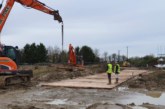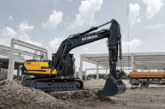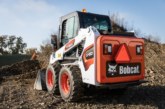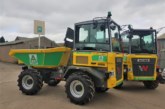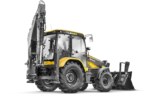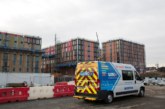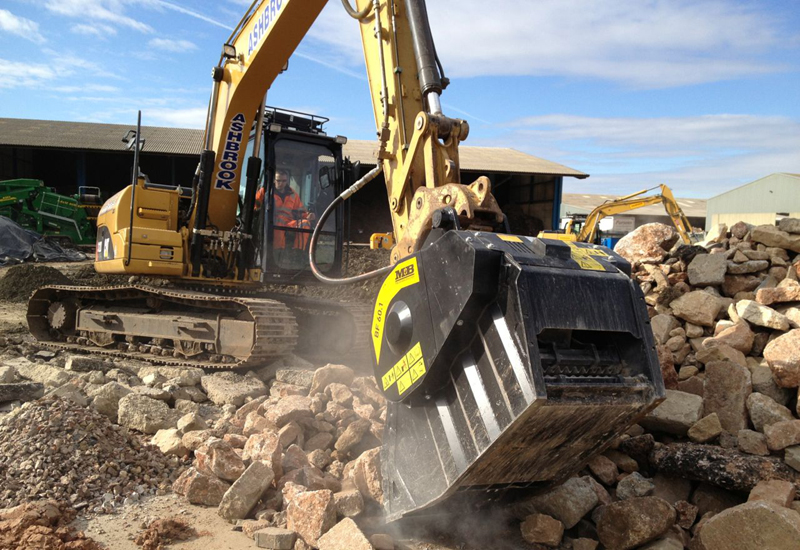
Worsley Plant explains how you could eliminate waste from a housebuilding project with the help of crushing and screening buckets.
With the increased focus on recycling materials on site and avoiding landfill, many construction companies are now considering the options open to them. Eliminating the need to load demolished material onto trucks or dumpers and take it to a waste dump – and also saving money and time over buying in new materials – is a key consideration. Not to mention the beneficial impact on the environment.
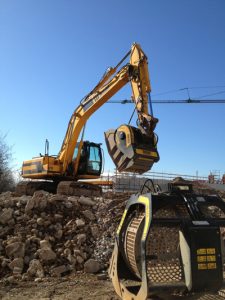 Crushing and Screening Buckets are significantly more versatile than traditional crushing and screening plant. The buckets offer enhanced operator safety, reduced transport costs and quick installation and changeover.
Crushing and Screening Buckets are significantly more versatile than traditional crushing and screening plant. The buckets offer enhanced operator safety, reduced transport costs and quick installation and changeover.
They can be used across a wide range of applications and are particularly suited to use on smaller sites. Requiring just one excavator they can be easily interchanged with other tools – such as swapping hammer to bucket – therefore offering many advantages over cumbersome conventional plant. Only one bucket is required to demolish, crush/screen, recycle and load material.
Crushing Buckets are suited to crushing inert materials directly on site, including rock, hardcore, stone, tile, concrete, glass and asphalt. Often used in conjunction with a crushing bucket, screening buckets can help to reduce crushing times by up to 60% allowing you to salvage materials suited to the type of job being carried out and to manage and reuse them in the best way possible.
A case in point
A great example of Crushing and Screening Buckets in use is highlighted by Barnsmore Construction, a groundwork contractor in Birmingham, who recycled 100% of materials on the site of a retirement development of 90 apartments which it was building in Leamington Spa. To do this the company used a screening and crushing bucket together.
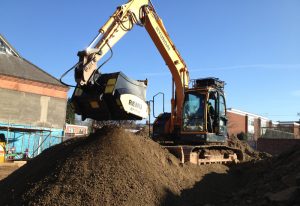 Part of the task set to the contractor involved excavating a whole storm water attenuation tank located under the proposed car park site. It then needed to install units, seal them and backfill the site with high quality materials suitable for the tarmac to then be laid on top for the car park.
Part of the task set to the contractor involved excavating a whole storm water attenuation tank located under the proposed car park site. It then needed to install units, seal them and backfill the site with high quality materials suitable for the tarmac to then be laid on top for the car park.
The ground conditions were 0.6m of sandstone overlain by 2.5m of clay. The high clay content was unsuitable to use with a traditional track screener, which would be the conventional method that Barnesmore would adopt on a project such as this. Clay is extremely problematic to screen and would have created a blockage on the machine. Added to this, the winter weather meant there was a high moisture content. Therefore, the contractor would have been looking at carting off the excavated material to landfill and buying in fill material to the correct specification required. Added to that was the fact that this was a small site with limited space to work.
Material re-use
Hiring in a REMU Screening Bucket allowed Barnesmore to screen and process all of the excavated arisings from the car park. This allowed 80% of the recovered materials to be reused, leaving only a potential 20% set to be taken off site to landfill. However, having been impressed by the bucket the contractor arranged to hire an MB Crushing Bucket to complete the job and allow the remaining 20% to be turned into aggregate for reuse on site.
Crushing and Screening Buckets can provide customers with a significant financial saving both in terms of elimination of costs for landfill and costs to outsource fill material and aggregate from nearby quarries. As far as the environmental impact is concerned, the reduction of road haulage in both directions and reduced burden on landfill speaks for itself in terms of the customer’s carbon footprint.



